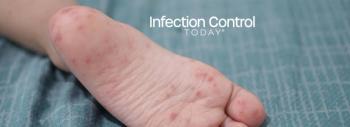
Contact Precautions Shown to Modify Healthcare Workers' Care Delivery
The prevention and control of healthcare-associated infections (HAIs) can help reduce patient morbidity and mortality, but a common prevention effort for patients with hard to treat infections known as contact precautions, can have positive and negative impacts on patient care. A new report published in the January issue of Infection Control and Hospital Epidemiology, found when patients with methicillin-resistant Staphylococcus aureus (MRSA) and other antibiotic-resistant bacteria are isolated in the hospital, these contact precautions reduced the number of visits by healthcare workers and outside visitors, but also increased compliance with hand hygiene upon exit of patients rooms.
Contact precautions are infection control measures that require patients to be isolated in their own room or grouped with patients colonized or infected with the same multidrug resistant organism like Clostridium difficile or MRSA. Healthcare workers and visitors must wear gloves, gowns, and other protective equipment while with a patient on contact precautions.
Over a 19-month period, researchers conducted a prospective cohort study observing healthcare worker activity at four acute-care hospitals in the United States where trained observers performed secret shopper monitoring of healthcare worker activities during routine care using a standardized collection tool and fixed one-hour observations periods.
Contact precautions were found to influence the actions of healthcare workers. Patients on contact precautions had 36.4 percent fewer visits from healthcare workers (2.78 visits/hour for patients on contact precautions and 4.37 visits/hour for those not on precautions). The difference was most evident among physicians and other providers, but less so in nurses. Importantly, healthcare workers were 15.8 percent more likely to perform hand hygiene upon exiting isolated patients rooms.
The frequency of visitors was also impacted by contact precautions with 23 percent fewer visitors for patients on precautions.
Our study shows that contact precautions for patients with drug resistant infections modifies the care they receive, says Daniel J. Morgan, MD, MS, a lead author of the study. Fewer visits and increased hand hygiene are important in preventing the spread healthcare-associated infections, but clinicians and epidemiologists need to consider both the positive and negative aspects of these interventions, including the effect to patients mental wellbeing and perception of care.
Past studies have linked contact precautions with adverse health events like patients developing delirium, increased risk of falls, or pressure ulcers.
Reference: Morgan DJ, et al. The Effect of Contact Precautions on Healthcare Worker Activity in Acute Care Hospitals. Infection Control and Hospital Epidemiology 33:1. January 2013.
Newsletter
Stay prepared and protected with Infection Control Today's newsletter, delivering essential updates, best practices, and expert insights for infection preventionists.






